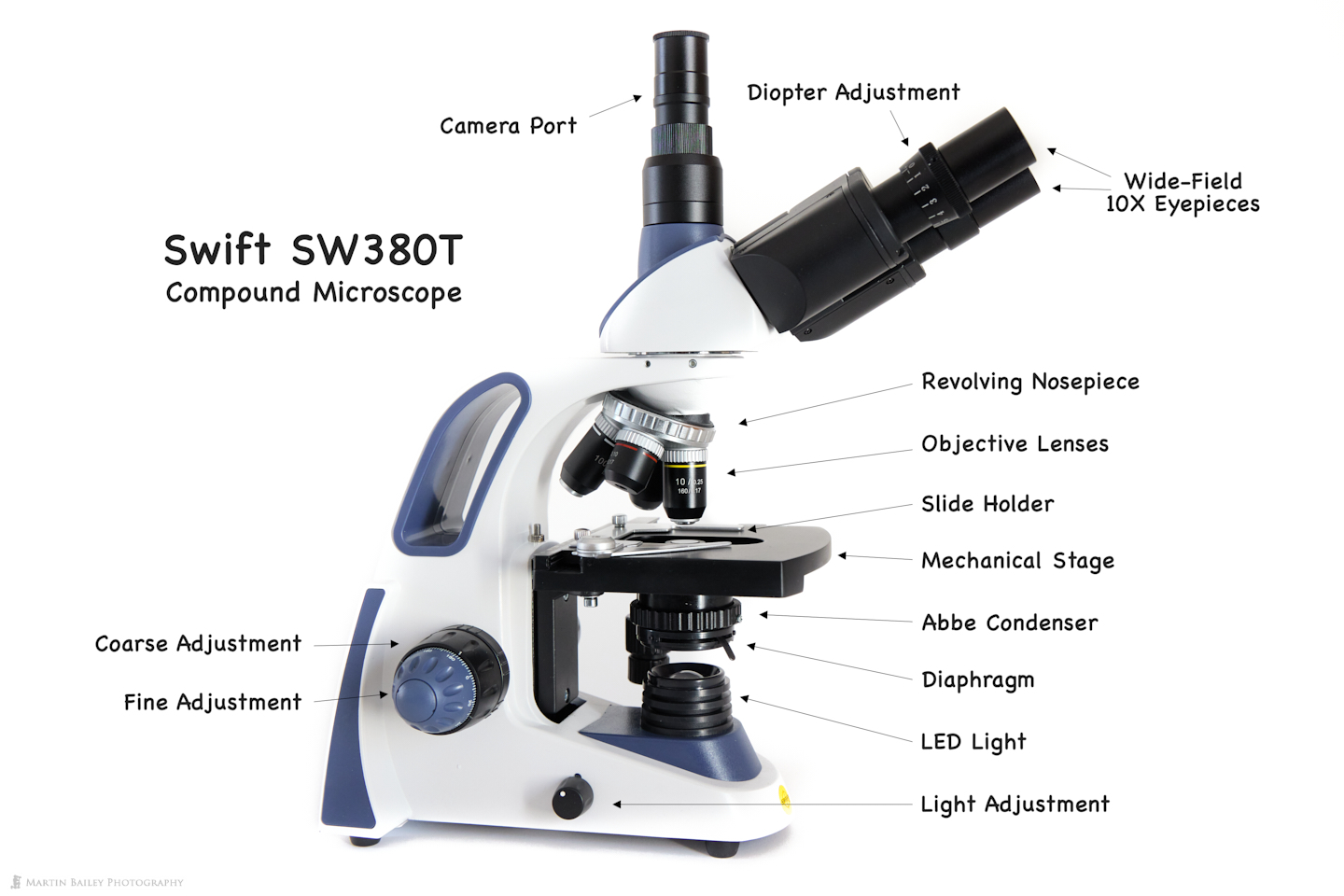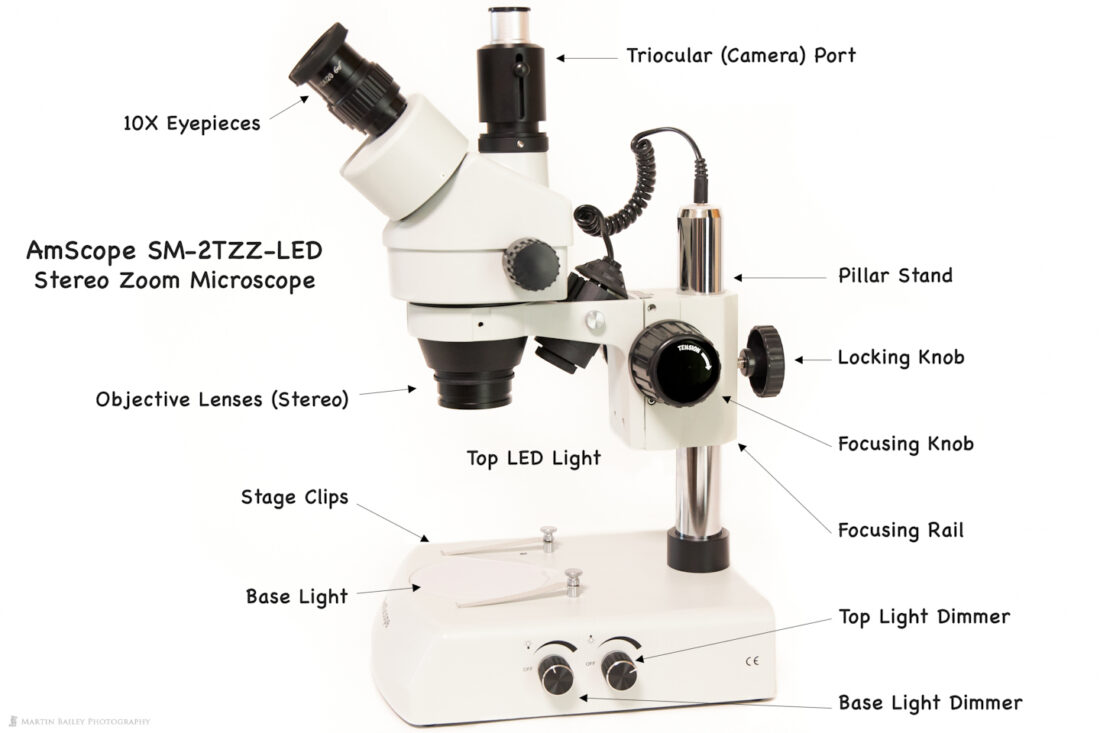I literally got two microscopes within a week of each other as I set myself up to dive into the microcosm. The first was a Compound Microscope, which is probably the type that you’ve seen more often. Compound microscopes require the specimen to be transparent to a degree and prepared on a slide. The very high magnification allows us to see things simply not visible to the naked eye.
To photograph opaque objects, a Stereo Microscope is more suitable, although the magnification is generally lower than a compound microscope. Here is a breakdown of what I’m using.
Compound Microscope
A compound microscope provides high magnification though the use of an objective lens, which is the one that sits directly above the specimen, and the ocular lens in the eyepiece. For example, my Swift SW380T compound microscope came with 4X, 10X, 40X and 100X objective lenses, and both Wide-Field 10X Eyepieces and 25X Eyepieces. When viewing a specimen with the 4X objective lens with the 10X ocular lens the specimen is magnified 40X. The 10X ocular lens with the 10X objective lens gives me 100X magnification. 40 x 10 is, of course 400X and 100 x 10 is 1000. If I use the 25X ocular lenses or eyepieces, the same objective lenses give me 100X, 250X, 1000X and 2500X magnification.

The 100X objective lens has to be used with a drop of oil between the specimen slide, which as a photographer seems quite scary to me. As the magnification is also huge, and my main goal is photography or micrography, I intend to switch this 100X objective lens out for a 60X lens in the near future. I think this will give me better use of the fourth objective lens port.
Stereo Microscope
The second type of microscope that I bought is called a Stereo Microscope. Mine is a pro Stereo Zoom Microscope from AmScope. The Zoom designation in the name tells us that we can zoom between the two magnification extremes of the optics.
The AmScope SM-2TZZ-LED comes with both 10X and 20X eyepieces and two Barlow lenses which enable me to adjust the working distance, and essentially the magnification as a result. Without a Barlow lens fitted, using the 10X eyepieces the zoom range is 7-45X magnification. With the 20X eyepieces the range is 14-90X. If I fit the 0.5X Barlow lens with the 10X eyepieces, the zoom range becomes 3.5-20X magnification. With the 2X Barlow lens and 10X eyepieces fitted the magnification ranges from 14-90X magnification and with the 20X eyepieces it becomes 28-180X magnification.

There are, of course, other types of microscopes, but the two I’ve mentioned here are what I’ve bought through my own research and I consider them to be good value for money, while not going over the top budget-wise.
